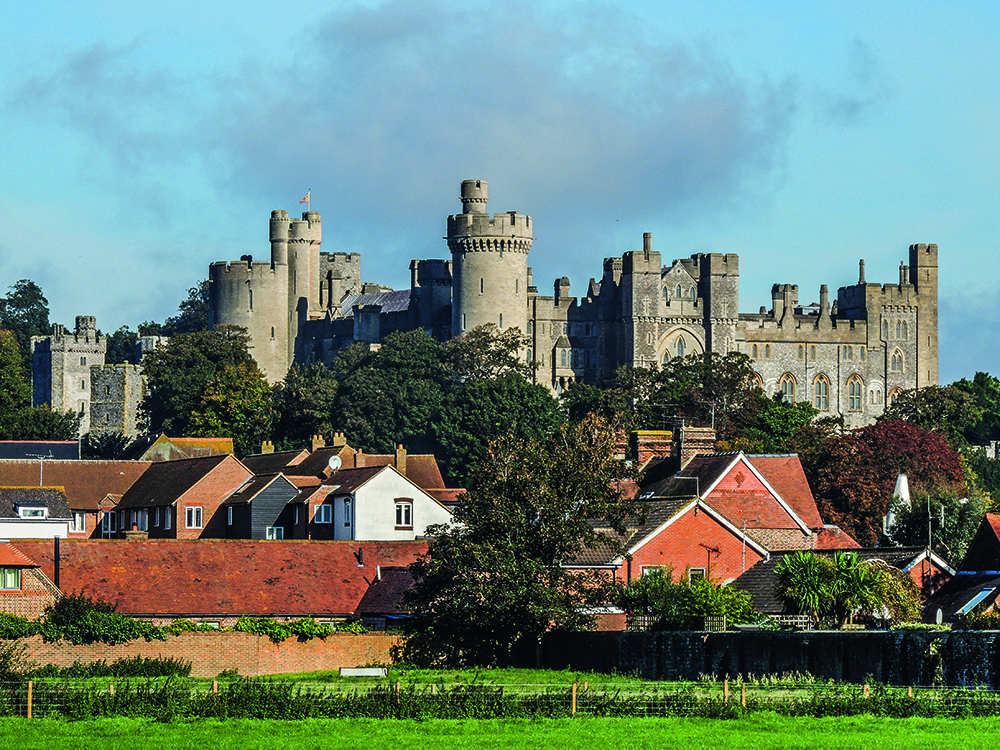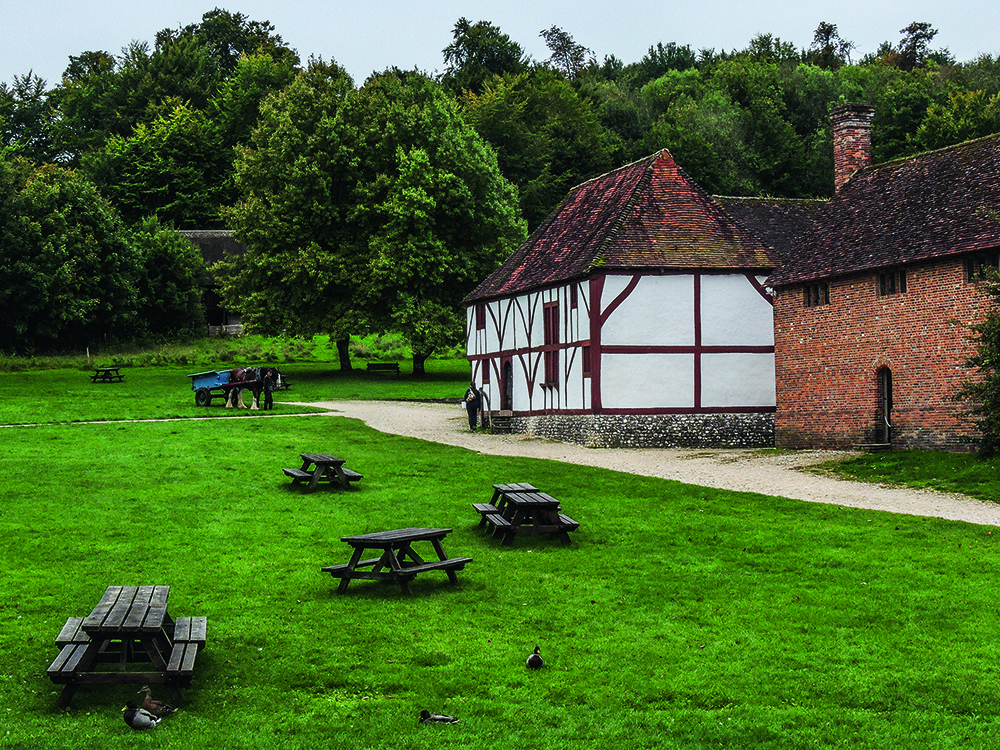Motorhome travel: Beside the sea in Sussex
See also: Motorhome Coastal Travel Guide
Wrestling with a blustery wind and the OS map at the narrow entrance to Chichester Harbour, I had a seagull’s eye view of this vast natural body of water and could visualise a sinister-looking hand. We were standing on its broken thumb – the East Head spit – and its four crooked fingers – the Bosham, Chichester, Emsworth and Thorney channels – were jabbing their fingertips into the land.
.jpg)
Such is the force of the Solent and prevailing winds that, 250 years ago, East Head projected out across the mouth of the harbour. Its flimsy sand and shingle habitat has since dramatically moved and now points directly into the estuary.
Connected to the main arteries (channels) of this estuarine basin is an intricate network of veins and capillaries (narrow inlets and creeks) that rhythmically circulate the harbour’s salty lifeblood. Inhaling, the harbour becomes a mecca for watersports activities and is home to several marinas, 14 sailing clubs and over 10,000 registered boats. Then, when refreshed, it exhales to expose bare mudflats and salt marsh that plate up a fine dining experience for thousands of birds.
Straddling the Hampshire and West Sussex borders, Chichester Harbour lies on a coastal plain squeezed in between Hayling Island to the west and the cathedral city of Chichester to the east. Framed by the chalk ridge of the South Downs National Park, it’s a low-lying landscape that holds a coveted Area of Outstanding National Beauty gong and one of the few parts of the Channel coastline to have escaped development.
Along the southern edge of the harbour at Birdham Pool, we reflected on the strange hours the millers must have worked at its eighteenth century tidal mill; after all, the tide waits for no man. The ‘pool’ has since been upstaged by its flashy, neighbouring 1960s son at Chichester Marina. Having the capacity to moor over 1,000 sleek and shiny boats in neat rows, it exudes a distinct flavour of the south of France.
In contrast, a mile further inland along the Chichester Channel, we sampled a different taste of the sea at Dell Quay’s waterside pub. With the harbour plug pulled out, our window seat offered us the opportunity to enjoy the locality’s ragtag traditional charms against the vibrant backdrop of the setting sun and with a lovely plate of battered fish and chips. The Romans probably established Dell Quay as a landing place and military base which, after the Norman Conquest, became Chichester’s main port.

At its northern end, the Chichester Channel flows into the Fishbourne Channel where, at today’s village of Fishbourne, our ancient invaders built a lavish palace. It’s the largest known Roman residence north of the Alps and displays a rich legacy of the luxurious lifestyle of its residents, including a superb collection of in-situ mosaic floors. Adjacent to this opulent home, the Romans established a trading hub – Noviomagus Reginorum – now Chichester.
At the city’s heart is a medieval market cross. Radiating out from this are four streets and their respective gateways and sitting within a 1½ mile ring of wall. Wandering around this defensive structure we noted that each quadrant has its own distinctive flavour. The cathedral, including the Bishop’s Palace gardens, was the show stealer.
Close to the city centre we joined the Chichester Ship Canal at its basin. The canal was conceived as part of a grand scheme to create a commercial transport corridor between Portsmouth and London. These days all that remains of what was the Portsmouth & Arundel Canal section is a four-mile stretch, which we followed inland to the Hunston Bridge. It was here, in 1828, that the landscape artist, JMW Turner, painted his famous Chichester Canal looking directly along the waterway towards the city’s cathedral spire.
From the bridge, the canal then turns 90 degrees to meet the Chichester Harbour. On the northern side of the harbour, tucked into an inlet branching off from the Bosham Channel, is the village of Bosham. Looking like a Constable canvas or as if out of a Hardy novel, it’s a rural idyll of exquisite vistas and strong connections to eleventh century history. Warning signs about flooding every tide around Bosham must be heeded by pedestrians and for parking. The water flows very quickly and we had to turn back on our walk.

Standing on Thorney Island (which is actually a peninsula wedged in between the harbour’s Thorney and Emsworth channels), we were on a military base for the British Army’s firepower. Hoping that none of the Royal Artillery Gunners had their fingers on the trigger, we marched around the headland’s eight-mile shoreline. Due to the military presence, access is restricted to this coastal path and you have to press a buzzer at the imposing gates at either end of the MOD land and answer a few basic questions. But don’t let any of this formality put you off as it’s all very friendly.
Just east of Chichester Harbour is the Goodwood estate, home turf to the Dukes of Richmond for 300 years and which has become synonymous with horsepower – gee-gees and wheels – on its racing tracks. From the grandstand of Trundle Hill, like many racing fans we gambled on a free view of ‘Glorious Goodwood’.
It was back to the simple life at the nearby Weald and Downland Living Museum. This open-air museum depicts rural life in southeast England through the lens of rescued buildings from Anglo-Saxon to Edwardian times. It certainly made us appreciate our modern comforts and it was so refreshing to see schoolchildren, dressed in period costume, excitedly revelling in old-fashioned outdoor games without a distracting screen in sight.
Another of the local ducal families, indeed the premier duke and earl of England, is the Duke of Norfolk. Approaching his home town of Arundel, the skyline was dominated by its stunning castle and majestic cathedral. It’s a monumental statement of aristocratic grandeur fusing medieval fortifications with Victorian Gothic architecture. From the packed town centre at the foot of the Norfolks’ lofty seat, we rambled along the River Arun to the flower-decked Black Rabbit pub to linger over an al fresco coffee and a distant view of Arundel Castle.
Seeking to dodge the gloomy weather, we switched back towards Chichester Harbour. It’s actually one of three sizeable harbours on the Manhood Peninsula (!). At its southern tip our spirits were energised by the radiating warmth and colour of the late afternoon sun across Pagham Harbour. On the RSPB’s nature reserve, we tracked the harbour’s edge to the double shingle spits at its slender opening to the sea. The sails and trails of Sussex had been so easy on the eye and, with our seascape horizons broadened, we returned home with oceans of energy left in our well-travelled legs.






.jpg)


Recent Updates
Engine management lights: all you need to know
What is the engine management light? What does it mean, and what do I have to do? ...
Motorhome air suspension: all you need to know
Motorhomes are heavy and the additional weight of equipment and height of the bodywork can increase the loads ...
Motorhome WiFi: how to get better motorhome internet
Staying connected on the move is more and more essential, so relying on campsite WiFi isn't an option – here ...
A class of their own - our guide to A-class motorhomes
Thinking of trading up to an A-class, or even going straight to the top of the motorhome tree? We guide you ...
Explore overseas on a motorhome dream tour
Enjoy exotic travel in a campervan or motorhome by hiring, swapping with someone else or exporting your ...
Motorhome water systems: everything you need to know
On-board water is an important part of every motorhome – here’s everything you need to know ...
Campervanning in Europe: what you need to know
Whether you're planning a leisurely drive through the French countryside, navigating bustling city streets in ...
Campervan security: all you need to know
With thefts on the increase, it’s important to know how to keep your campervan secure and prevent campervan ...
Campervan furniture: everything you need to know
Our campervan experts guide you through all the essentials for your campervan, including tables, chairs, ...
Campervan finance: how to fund your purchase
Here we look at the different types of campervan finance available, to help you decide what’s the best option ...
Other Articles
Britain’s best used motorhomes
Want a great motorhome without paying the premium for a new one? Here's a guide to the best you can get in the pre-owned market for each layout, ...
Which motorhome? Choosing the perfect motorhome for you
Choosing a motorhome or campervan is one of the biggest buying decisions you’ll ever make, so it's important ...
Campervan washroom essentials: stay fresh on the road
Our guide will take you through the campervan washroom essentials you'll need so you're well-prepared for ...
Dogs in campervans: all you need to know
Follow our advice and your dog will enjoy campervanning as much as you do ...
Electric campervans: all you need to know
Our guide will take you through everything you need to know about electric campervans and what the future ...
Motorhome electrics: a complete guide to your motorhome electrical set-up
Motorhome electrics can dramatically enhance the convenience and comfort of your vehicle – but they can be ...
Lighting for campervans: all you need to know
We guide you through all the lighting options available for you and your campervan, including interior ...
Electric bikes for motorhomes: our ultimate guide
Read our comprehensive guide to electric bikes for motorhome owners, helping you add electric power to your ...
Our guide to 'cheap' motorhomes in 2024
If you're on the hunt for an affordable new motorhome, this is the best place to start – we've rounded up a ...
Campervans in winter: all you need to know
Here's your guide to preparing your campervan for the colder months, whether you will be using it or putting ...